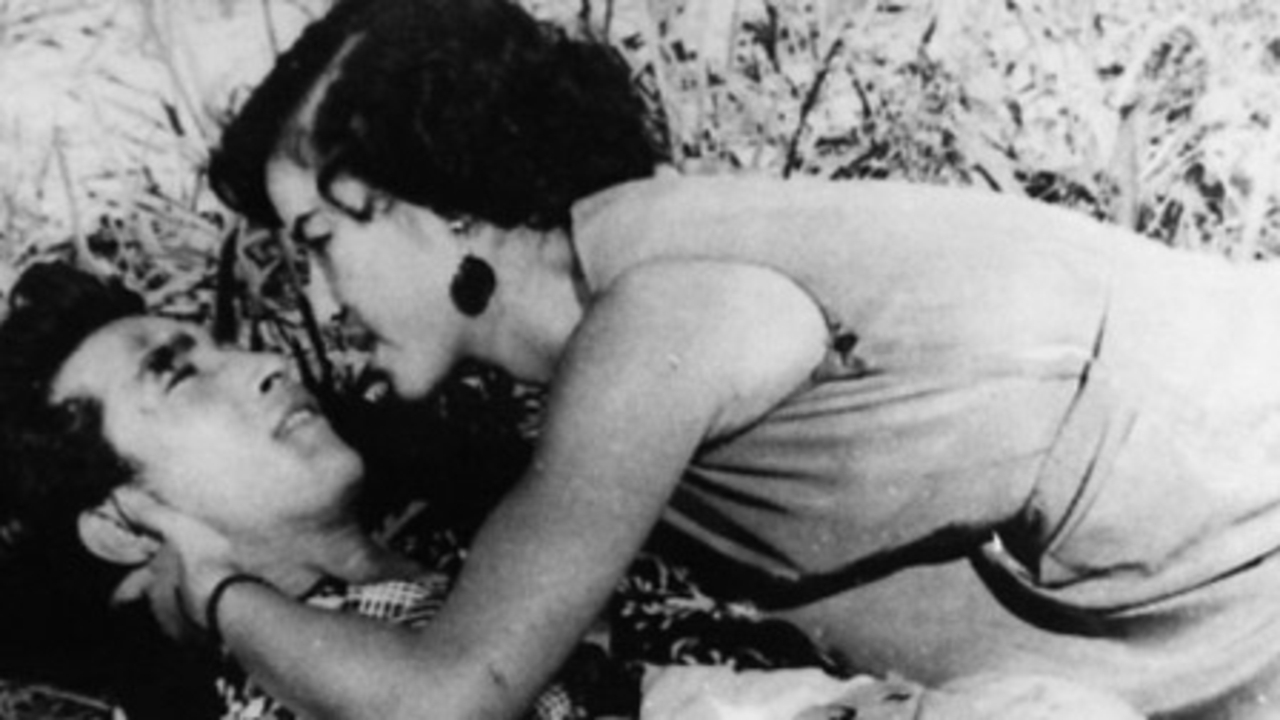For most revered mid-century filmmakers, noting that a particular film featured their first original screenplay and was their first in color would seem to guarantee it additional attention. Curiously, that’s not really the case for Satyajit Ray‘s Kanchenjungha (1962). A careful tapestry of small interactions set against a backdrop of physical grandeur and social change, it seems to get lost in the critical shuffle, functioning as a kind of way station between the narrative sweep of the first two entries in the Apu trilogy and the more refined, self-aware craftsmanship of The Big City and beyond.
counter-programming
With a quiet grace, and the kind of childlike innocence in its narration that lays bare the adult melancholy all around, Shin Sang-ok‘s My Mother and Her Guest (1961) sneaks up on you. It’s a far cry from the violent, Occupation-era love triangle of his A Flower In Hell (a previous Counter-Programming entry released just 3 years prior), though both star Choi Eun-hee.
Plenty of films, indeed much of modern art and poetry, has sought beauty in apparent hideousness. At least since Baudelaire fondly remembered a romantic stroll among the graceful swarm of putrid maggots inside “that superb cadaver / blossom[ing] like a flower,” it’s been a constant theme.
It would be easy, accurate, and a little reductive to call Ritwik Ghatak “the poet of Partition.” But it’s inescapable. Ghatak’s films are obsessed with that existential trauma, even in something like previous Counter-Programming entry Ajantrik. Here is a guy who can make a love story about a man and his car, a sort of fart-filled Herbie, and still conjure up deeply-felt anxieties about colonialism and territorial integrity.
As Qinawi — our despondent, hobbling, would-be protagonist in Cairo Station — retreats to his shed outside the train depot to rest, he shifts the pants hanging from a ramshackle clothesline to block the midday sun from his eyes. It’s the kind of Neorealist detail that the great Egyptian director Youssef Chahine excels at here, in this, his arguable masterpiece.
At a crucial moment in Ritwik Ghatak’s Ajantrik (frequently translated as The Pathetic Fallacy), our hero Bimal strokes the most important person in his life and says, “Never mind, Jaggadal. You and I … we’re together.”
It’s a poignant moment, this Bengali portrait of devotion and erotic desire in the face of widespread mockery and community derision.
There is no moment in Shin Sang-ok‘s A Flower In Hell in which the American post-war occupation of Korea is absent. It is the film’s focal point, even when the soldiers aren’t on screen. Even when lovers are rolling around in the grass.
The furious quote in the title, courtesy of our tortured poet protagonist Vijay (director/producer/star Guru Datt), arrives near the end of 1957’s Pyaasa. Spurned by a world that privileges commerce over art, that elevates duplicity over sincerity and integrity at every turn, Vijay has had enough.
Awaara, Raj Kapoor, and early Bollywood
A stern judge, obsessed with questions of lineage and social order, casts out his pregnant wife for supposed infidelity. A fatherless child born to the slums falls in love with a girl impossibly out of his league, only to meet her again under much different circumstances as an adult.
Shirō Toyoda’s The Mistress is based on Mori Ogai’s Romantic novel Wild Geese (and sometimes referred to by the title of the original, as Criterion does). The film is in some ways a familiar melodramatic narrative about the crushing of a woman’s desire under patriarchy — a treatment dismissively summarized in 1959 by Bosley Crowther of The New York Times as “a morally mawkish situation upon a tear-misted screen.”










